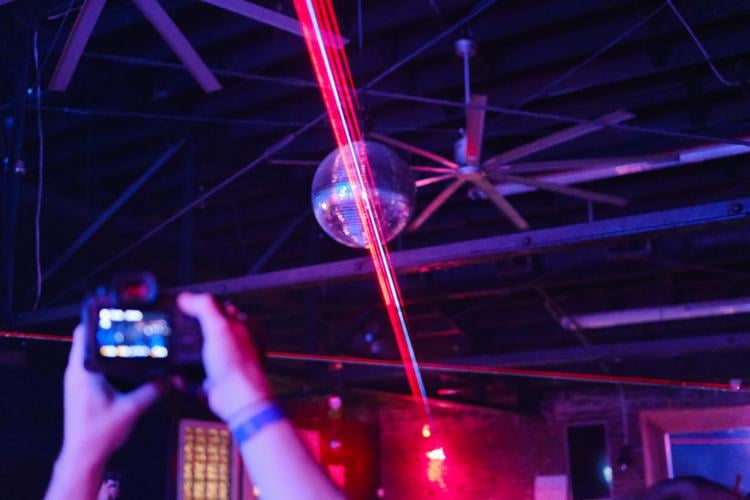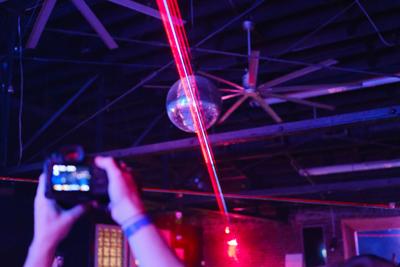COLUMBIA — As a photographer, it’s starting to feel like my job is obsolete. I often arrive to shoot an event and immediately sense another photographer, pro or amateur, peeking over my shoulder to compete for the “best” angle. Professionals fall into rhythm and are polite about sharing space, there’s a dance-like etiquette to shooting around others that you learn over time — though there is nothing inherently wrong with being somewhat clumsy at first.
Another challenge lies in the fact that in many environments, my iPhone 14 can take a comparable photo to my professional equipment. Even acclaimed photographers I’ve followed throughout my decade (plus) on Instagram, like Jim Richardson, teach workshops on iPhone photography.
Despite this oversaturation of the photographic market, I have attempted to remain a soulful documentarian. It’s a double-edged sword to become a professional at something that lets you explore an endless sea of possibilities, yet feels just as crowded as a small pond.
This sharpness becomes amplified when the proverbial “space” that you occupy is already a bit cramped, albeit with amazing things. For me, this space is the music and DIY arts scene in Columbia — a space that for its size has a frankly astonishing legacy of quality documentation.
Documentation plays a huge role in DIY/self-produced music scenes because communication via word of mouth, and now primarily social media, is the engine that runs it all. What would that kind of communication be without a photo or two to back up the stories from the last house show, or the antics from the last Daikaiju performance?
With social media’s ever-expanding role in all of this, it has begun to feel like I’m drowning in a culture of FOMO (fear of missing out) that demands documentation and venerates it as being almost greater than lived experience — the image becomes grandiose, outgrowing the simplicity of just being present in a space.
To me, and others I’ve discussed this with in passing, those of us actually taking the photo … the present moment is only fully lived through our lens, and almost more importantly: it is no longer ours to control once it passes through the lens and lands in a format which can be perceived by everyone else.

Silhouette of Brett Nash, Aaron J. Burke, Dylan Dickerson and Cameron Powell outside of New Brookland Tavern under the marquee in January 2024.
A documentarian is someone who devotes their time to preserving lived experience, and equally, someone whose work honors the archive of other documentarians in their shared space. So much of this work goes unnoticed and underappreciated, unshared due to the volume of output or unnoticed until years later when the story or experience reaches a point of needed resurgence — sometimes even carelessly erased.
David Stringer, who started documenting the South Carolina music scene via the blog Scene SC in 2008, has spent countless Sunday mornings documenting Papa Jazz, attended probably thousands of shows across the state at this point and built sustainable relationships with numerous bands and solo musicians who call South Carolina home.
Sean Rayford (@theangrywhale on Instagram) recently published a photo book and zine of his photos documenting the final few months of shows at New Brookland Tavern’s old location on State Street. Rayford’s documentation practice extends far beyond our local music scene, of which his extensive photojournalism career is evidence. Rayford’s highly regarded body of work spans natural disasters, national sporting events, pivotal political moments and other titular newsworthy events.
The common denominator amongst these local documentarians is their humility and dedication to the craft, to being present and tallowing community engagement to form as a natural afterthought to the deeply intentional work they share.
The public often assumes photos give news an element of objectivity, yet the reality is that they are still seeing the image from the perspective of the photographer. Rather than being 100 percent objective all the time, a photo’s ultimate impact comes from the human experience and essence it displays.
The research I’m currently invested in at the University of South Carolina focuses on the idea of “information embodiment” as a way to understand documentation in the form of photography. Essentially, this means I’m trying to understand how people like Stringer, Rayford and myself take information from existing purely in the moment, in our bodies and our perception, and transfer that information into the form of an image.
What I’m thinking about now is how do I as a documentarian (professionally, independently or just for fun) take the experience that is getting channeled through my body and senses and transfer or “code” that information into an image.
This balances a demand for both technical control over my equipment and a deep attention to my surroundings — and this is hard work, to be honest. It challenges the way I move through certain spaces, even when I don’t have a camera in hand. I find myself unable to detach my physical presence in “scene” environments from the way I want to see it through my lens, and from the visual stories I want to tell with the images I encode.
Documenting your hometown
In respect to the long-term relationship I find myself engaging with Columbia’s DIY scene, I’ve found the idea of it as a hometown permeates nearly all levels of social strata. The tension between staying and leaving will always permeate Columbia’s stories.

Ann Prime stands on the porch of her home in the North Main district of Columbia, SC. (35mm expired black and white film).
Universally, the desire to leave and break free, to reinvent oneself constantly pulls us away from spaces that have held us. At the end of these stories, the realization occurs: there are some things you just can’t run away from.
Of course, we’ve all heard the idiom “you can take the (person) out of the (place), but you can’t take the (place) out of the (person).”
I have a core memory of being a week away from leaving Columbia for a job out of state in 2022, just to escape. It was a song that kept me here, though — it was “The Weight of Lies” by the Avett Brothers, somewhat ironically.

Josh Dunn poses next to the HVAC unit at New Brookland Tavern’s old location on State Street in West Columbia in January 2024, not long after the venue moved to Harden Street in Five Points.
I realized then that the things I was trying to run away from were the things that would always find me, and that if I wanted to fight them off, here was my battleground. The dedication and attention to presence in the space which was born from that realization, I believe, is what motivates me to be a more reverent documentarian.
The South needs its heroes, its progressive spaces, its curators of the good and the beautiful. (You can read more about that here.) There is a painful joy in inhabiting a space that is at war with your very essence at times; yet, without that constant tension your dreams fall flat in the face of lukewarm adversity.
No matter the role you fill in a given space, to embody your values fully you must accept that you will be challenged, not just ideologically but to your core. Inhabiting a polarized space, politically or artistically, is more about what you do in the mundane shadows to care for and support your community. As a documentarian, it is important to seek out these moments of ordinary lived experience if your goal is to humanize dichotomous spaces like the South — like Columbia.

A ritual outside my apartment, Fall 2021.
Being a documentarian in an inherently politicized space must involve ceaseless work towards full embodiment of what you believe to be the truth and your work is a visible manifestation of your presence therein.
Be it love and heartbreak, nostalgia for a street or a bar of your hometown, or grander ideals of freedom and autonomy, they all come together to represent the essence of something beyond what we can lay eyes on.















